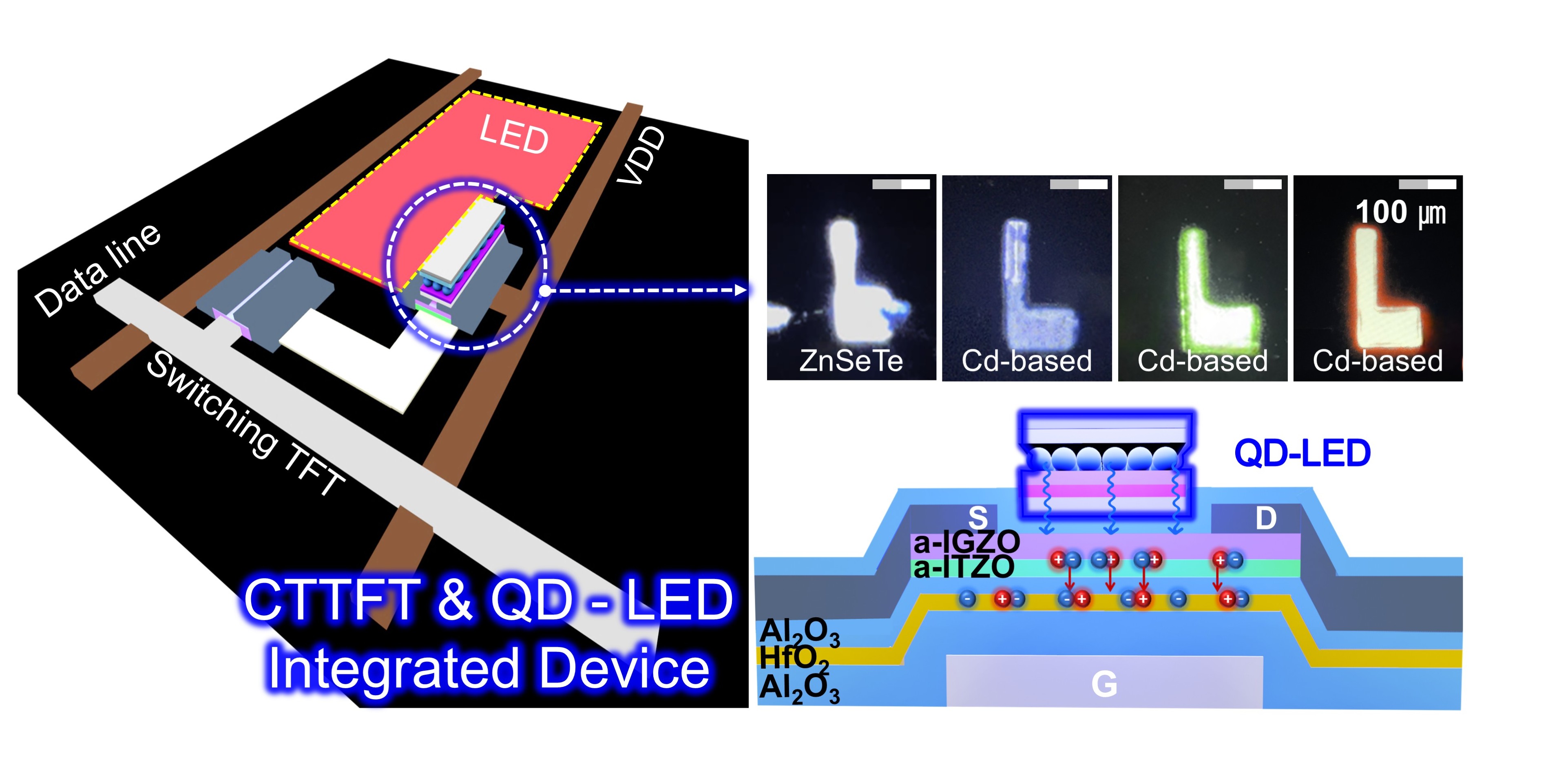Monolithic Memory-in-Pixel integrating CTTFT and QD-LED for self-erasing operation. Cd-free ZnSeTe QD-LEDs demonstrate superior erasing efficiency (~60%) compared to Cd-based counterparts.

Abstract
The advancement of ultrahigh-resolution displays and extended reality applications has driven increasing demand for compact and low-power device architectures capable of simultaneously performing memory and light-emission functions at the pixel level. To address this need, charge-trap thin-film transistors (CTTFTs) based on oxide semiconductors have attracted attention as promising nonvolatile memory elements due to their excellent electrical performance and compatibility with large-area fabrication processes. In this study, we propose a memory-in-pixel (MIP) device that monolithically integrates a CTTFT and a quantum dot light-emitting diode (QD-LED) within a single pixel. The fabricated CTTFT, employing an Al2O3/HfO2/Al2O3 gate dielectric and an oxide channel, achieved a field-effect mobility of 22.1 cm2/V·s, a subthreshold swing of 99.1 mV/dec, an on/off current ratio exceeding 109, and a wide memory window of 6.06 V. To enable self-erasing functionality, a QD-LED was monolithically integrated on top of the CTTFT using a photolithography-based lift-off process. The resulting QD-LEDs demonstrated EQEs of 20.9%, 6.5%, and 1.7% for red, green, and blue, respectively. Notably, ZnSeTe-based Cd-free QD-LEDs achieved an erasing efficiency of ∼60%, outperforming their Cd-based counterparts. This hybrid MIP architecture operates without external erase components and offers a compact, environmentally friendly platform suitable for next-generation high-resolution display applications. [Link to Journal website (ACS Applied Materials & Interfaces)]
Congratulations, Seoungmin!